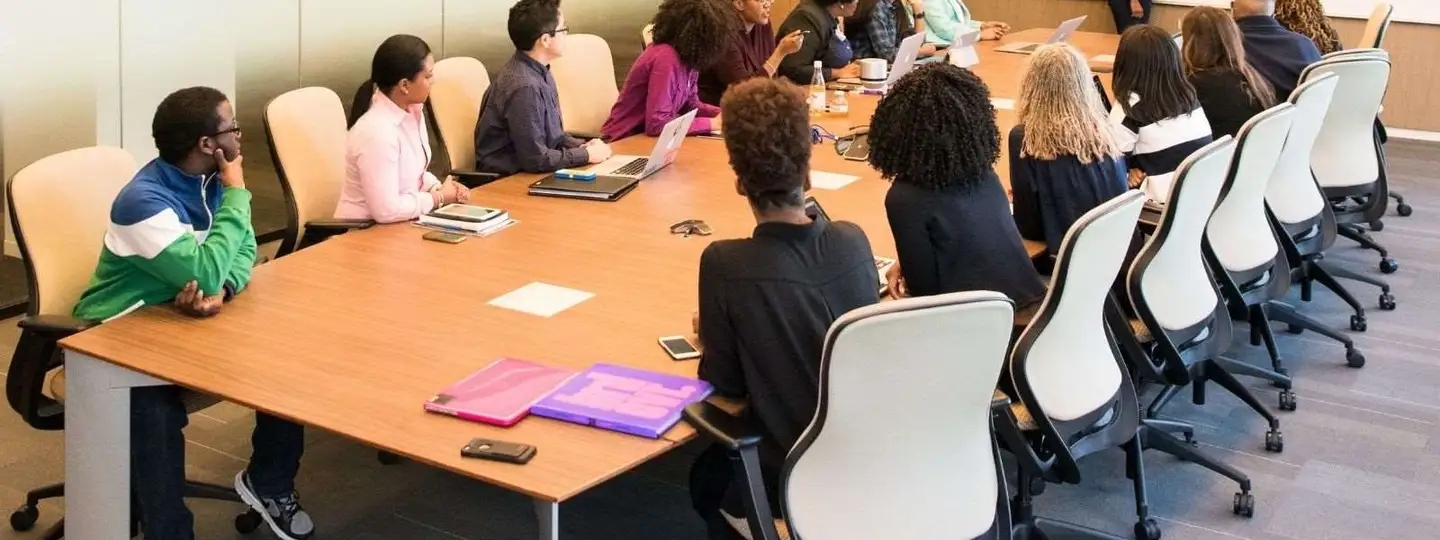Do you know how to hold a meeting? Well, most people don't. One of the most boring experiences people have to deal with in the workplace is being stuck in a bad meeting. You can come very early for the meeting only for everyone else to arrive 30 minutes late, and for the actual meeting to start an hour later. This can and should be avoided. It is important to learn how to hold a meeting in teams if you are to be productive. Here are some effective meetings guidelines.
First Ask Yourself: Is This Actually a Meeting?
Before you book a room and set a time, you must ask yourself first if the meeting you are planning to hold is necessary. Will it benefit the team in any way, and who is supposed to attend? There are many things that can disguise themselves as meeting-worthy, but at the end of the day, you will realize how unnecessary it was and how much time was wasted.
For instance, sometimes you might want to hold a short presentation instead of a meeting. This is effective for situations where one person has to talk, and the rest have to listen. To make sure people stay engaged, send the slides and other documents in advance. You can also have a short discussion prior to the presentation online so that it doesn't take a lot of time.
Other things that might disguise themselves as meeting-worthy are status updates. You need to go straight to the point with these. There is no need to force people to interrupt their day and sit for a long time for something that can be sent to their emails. You can also save time by just posting status updates in a workgroup or pinning them to a whiteboard. The whole team will be able to see, and that will be more effective than gathering everyone around. If there is a need for follow-up discussions, you can hold them with the people involved in the particular project.
How to Hold a Meeting - Start on Time. End on Time.
One of the worst ways to start a meeting is by waiting for some people to show up. If you are the person in charge, make sure you show up for the meeting before everyone else. Waiting in a meeting room can be frustrating, especially for those who have a lot of work to do. Research shows that a lot of people in power fall into the bad habit of showing up for meetings late. This creates a situation where people begin to question if their time is more valuable than everyone else's?
Time is important, and sitting around isn't the best way to use it, especially at work. You must also understand that people learn a lot from their leaders. If you are late for one or two meetings, you will start teaching people that it's ok to be late. Instead, you must always ensure that every meeting starts and ends on time.
Prepare People to Actively Listen
It can be difficult to get people to pay attention in a meeting. So, before the meeting starts, try as much as you can to prepare people who will attend to actively listen. This is a communication technique that your attendants need to have. They should listen deeply and solely to the speaker without engaging in activity that will cause them and others to not get what the meeting was about. Find ways to encourage them to live in the moment and pay attention to your words and gestures. If you are the one responsible for the meeting, look into how to hold a meeting before you send invites. Also, if it's an online meeting, also research on how to hold a meeting online. There are several ways to prepare for people to actively listen in a meeting:
Ensure that the meeting room is comfortable: There are several ways to do this. For instance, you can provide food in the meeting room. This works if you have the meeting first thing in the morning or during lunch. You must also make sure that the room temperature is ok and there is no noise in the surroundings. Another good idea is to book a meeting room that has natural light. This will ensure that people don't get too comfortable or sleepy.
Think about the best time: This is an important part of how to hold a meeting. There are some meetings that are better held in the morning. This is when people have the most energy and, therefore, will probably pay more attention. Research also shows that meetings held just after lunch are also effective since people will be a little refreshed.
Meetings require attendees to be attentive. So before you dive into the agenda, find ways to make sure everyone is mentally present. One good way to do this is with an ice breaker. This will help relieve some tension and get everyone to listen. Also, encourage everyone to put away their phones and make sure they are on silent. Having phones ringing in a meeting is a distraction that is avoidable.
Establish Ownership of the Meeting
Someone needs to claim responsibility for what will be happening in the meeting. This means that there should be a proper agenda, and it should be clear who will do follow-ups and measure the success of the meeting. If there are any key points brought up in the meeting, you must also ensure that someone jots them down. If no one is responsible for the meeting, you might find that it will devolve into a free-for-all.
Have a Clear Agenda
A meeting without an agenda is pointless. These types of meetings generally end up being social events, or worse; they can turn into heated arguments. This wastes valuable time and should be avoided at all costs. Every meeting that you hold must have a specific agenda so that people know why they are gathering. The agenda must be prepared in advance, and it should feature things like:
- Who is chairing the meeting?
- What should people bring to the meeting?
- What time should the meeting start and end?
- What is the goal or goals of the meeting?
Once the agenda for the meeting is set, you must send it out to all the participants ahead of time so that everyone knows what they should be doing and what the meeting is all about.
Invite People Who Need to Be There
Another bad meeting habit is inviting people who should not be in the meeting. It can be very tempting to try and get everyone in a meeting or think that more people mean more ideas. However, this is not true at all. The success of a meeting is not determined by the number of people in it. In fact, you stand a better chance at getting a productive meeting when you include only the necessary people.
Research shows that the more people you gather, the more time it will take to arrive at a conclusion. If your meeting has a clear agenda, then you should invite only the people closest to the issue you are trying to address. These should be individuals whose contribution directly impacts the outcomes and those who have vested interests in what's being talked about.
End with an Action Plan
The last few minutes of every meeting must be spent discussing the next steps. As you are discussing this, talk about who is responsible for what and what the deadlines are. If you are not careful, people can walk out of a meeting without knowing what next steps they should take. Such meetings are nothing but a waste of time. Instead, you must ensure that you clearly lay out what everyone needs to do when they leave the meeting. You must also note the individuals who are directly responsible for certain tasks and make sure they know what they are supposed to do. This will create a culture of accountability since the next steps will be clearly laid out. You must avoid meetings that are time wasters or productivity killers.
Having effective and productive meetings is not difficult. However, it takes time to ensure that your meetings are held properly. The tips listed above can help you if you use them as rules for holding a meeting. You will start to hold productive meetings that will move your organization ahead. Ensure that when the meeting ends, people have a sense of urgency. For instance, you can ask questions like "Who will do what by when and when do you think I can have that?" This way, people will know that someone is waiting for the task they have to complete. It is also important for people to know that you will track people who deliver and those who don't. This is an important part of how to hold a successful meeting.





